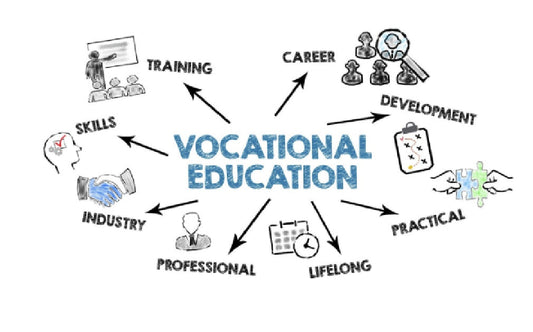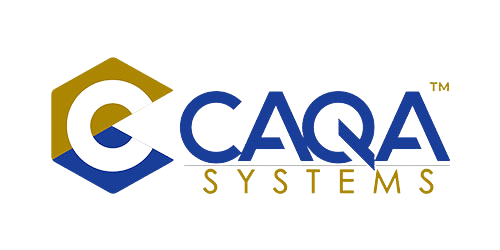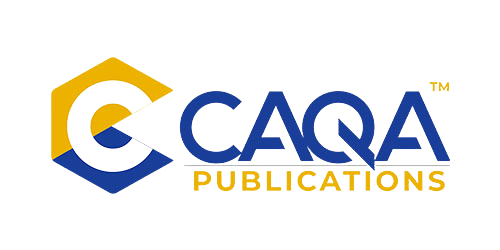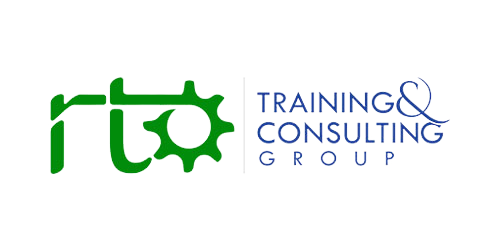A National Promise That Built Confidence, Mobility and Fairness
Australia’s national training system has been anchored to a promise that is elegant in its simplicity and profound in its consequences. A qualification earned in one jurisdiction should be recognised in every jurisdiction. For more than three decades, this assurance has supported an economy that moves, grows and adapts. It has encouraged a culture of hiring that looks first at capability and evidence of competence rather than postcode or provider brand. It has given learners the courage to enrol because the credential they begin will travel with them if life does what life often does and demands a relocation, a change of role or a shift in industry. The promise has been particularly powerful for regional Australians and for sectors that rely on national labour mobility. A graduate in Cairns can accept work in Kalgoorlie without sitting through duplicate units. A care worker trained in Hobart can relocate to Newcastle and step into shifts. A civil construction trainee can follow major projects across borders, confident that their competencies will be understood on day one. This is not theoretical convenience. It is economic infrastructure, social equity and institutional trust rolled into one.
In 2025, the architecture that sustains this promise faces significant pressure. Several states are voicing frustration with the pace of qualification reform and the constraints they perceive in Commonwealth policy and funding settings. The Commonwealth is testing TAFE self-accreditation pathways intended to lift responsiveness in priority skills areas. Higher education, meanwhile, continues to operate on a parallel track in which self-accrediting institutions design and approve their own awards, a model that offers speed for universities but does not prioritise nationwide comparability of outcomes in a way that employers consistently find transparent. The danger is drift. If Australia slides from a single nationally coherent system into a patchwork of jurisdictional models, employers will hedge, learners will hesitate, and providers will face new layers of compliance that add cost without improving quality.
This article explores what is truly at stake for the VET sector if fragmentation proceeds and why the north star of one country and one credential remains the right aspiration for a skills system that must be both agile and trustworthy. It identifies the real bottlenecks that have led states to contemplate going it alone and then sets out a practical agenda that can speed reform, sharpen relevance and rebuild confidence without giving up the portability that has served Australia so well. The aim is not to defend the status quo. It is to preserve the parts that work, especially portability and clarity, while modernising the parts that hold us back, including slow qualification change, rigid funding and uneven implementation.
The Promise and the Payoff of National Consistency: Portability, Confidence and Equity
National recognition multiplies opportunities because it removes friction from labour markets. Employers with operations in multiple jurisdictions can recruit against a common standard and reassign staff across states without retraining. Workers can follow seasonal demand and the arc of major projects without carrying the risk that their competence will be questioned at the border. Governments and taxpayers benefit when learning is done once and recognised everywhere. The effect on decision-making is subtle but powerful. A learner is more likely to commence when they know the investment will hold its value if they or their family need to move. A small business is more likely to recruit from interstate when equivalence is clear and the credential signal is unambiguous.
Portability also functions as a quality signal. A nationally recognised qualification communicates that a learner has demonstrated competence against outcomes endorsed by industry and overseen by a national regulator. When an employer in Perth trusts outcomes achieved at an RTO in Lismore, the signal is doing important work. When that trust is weakened, employers compensate in rational but costly ways. They build private pre-employment tests, insist on local refresher training or retreat to a small set of providers they know, even if that narrows access and lifts cost. The system becomes slower and less fair. The burden falls on learners who can least afford redundancy and on businesses that rely on a national pipeline of talent.
Consistency is also an equity mechanism. People change jurisdictions for reasons that are rarely planned, including housing pressures, caring responsibilities and natural disasters. National recognition safeguards the progress of those who have the least room for error. It reassures families at the point of enrolment and at the point of disruption. It protects small and regional businesses that need to surge their workforce quickly during peaks, confident that credentials will be understood. These are not marginal benefits. They go to the heart of an Australian settlement that prizes mobility, fairness and work readiness.
Why the System Feels Stuck and Why States Are Restless: Speed, Funding and the Higher Education Shadow
The loudest criticism from states and employers concerns the speed of qualification change. When training products take years to redesign, industries that are moving quickly develop their own interim workarounds. Those stopgap measures might be skill sets, accredited courses or provider-accredited programs. They can be sensible responses to urgent needs, yet each exception sits uneasily alongside the national template. Over time, a culture of exception-making increases the temptation to formalise state-recognised alternatives and to loosen the commitment to national coherence. This is how fragmentation begins, not with a formal vote to abandon the national project but with a steady accumulation of practical departures that feel justified at the local level.
Funding architecture is another point of friction. Public funding drives behaviour because it shapes what is viable and what is urgent. When a jurisdiction needs to respond to sudden demand, for example, in clean energy trades, cyber operations or disability support, state governments understandably want flexibility to move quickly, to target subsidies at priority cohorts and to support shorter, stackable offerings that meet immediate needs. If national agreements are experienced as slow, complex or overly prescriptive, jurisdictions design bespoke programs that make sense locally. Over time, a lattice of eligibility rules, subsidy rates and student contributions emerges that does not map neatly across borders. The learner and the employer are asked to navigate an increasingly complicated landscape.
Higher education’s split model offers both inspiration and caution. Self-accrediting universities can move at speed and innovate in design, while providers that rely on the national higher education regulator apply through established quality assurance processes. This mix has helped universities be responsive in areas where industry signals are clear. It has not, however, produced comparability of outcomes as a dominant organising principle, because that is not how the higher education system is designed. Degrees with the same title can differ materially in content and assessment. Within universities, a culture of peer review and professional accreditation mitigates some variation, but in VET, the claim is different. A VET qualification asserts that the holder is competent to perform work against industry-defined outcomes. Drifting toward a higher education style model in VET risks blurring the reliability of that claim and weakening the feature employers value most, namely, equivalence.
The TAFE self-accreditation debate sits squarely in this context. The instinct to increase responsiveness is sound and widely shared. TAFE institutes need the ability to co-design and deliver programs in partnership with employers quickly when local demand is clear. The question is design. If self-accredited programs align with nationally agreed outcome statements and assessment principles, and if they are portable by default across jurisdictions, then self-accreditation can add speed without sacrificing recognition. If, on the other hand, such programs diverge on content, evidence expectations or licensing recognition, two classes of credentials will emerge: a national class and a state-specific class. That would be a step backwards that would create confusion for employers and risk for learners.
What Fragmentation Would Look Like on the Ground: Maze, Duplication and Uneven Access
Fragmentation will not announce itself with a dramatic collapse. It will be felt first as friction. A worker completes a self-accredited diploma in one state, moves for family reasons and discovers that the licensing body in the destination state does not accept the program without additional local training. A national employer maps internal job families to five slightly different versions of what is described as an equivalent qualification to satisfy safety and audit requirements in each jurisdiction, then imposes its own checks to control risk. Hiring slows. Training is duplicated. Compliance becomes a cost centre rather than a quality assurance activity. The signal that once allowed employers to trust and move quickly becomes noisy and uncertain.
Independent RTOs that serve national employers will carry the heaviest administrative load if dual regimes emerge. Parallel documentation, audits and reporting for state-specific programs alongside national products will squeeze margins and absorb energy that should be going to curriculum design, assessment quality and employer partnerships. Smaller providers will retreat from multi-state delivery. Regions that rely on a mix of public and private provision will find choice narrowing, precisely where choice has mattered most. The learner will absorb the most consequential risks. A generous state-funded program that meets a local need might carry uncertain recognition elsewhere. Families living near borders, or anticipating a relocation, will delay decisions or opt out altogether. The system will deliver fewer opportunities to those who most need them and at a higher cost to the public.
How to Gain Speed Without Losing the Signal: An Outcome-First Approach With Visible Translation
Australia need not choose between stasis and splintering. The system can preserve national recognition while moving faster and tailoring delivery to local needs if it pivots decisively to an outcome-first design. The central move is to shift emphasis from highly prescriptive training products to a set of outcome statements that are stable, transportable and tightly linked to real work. These statements should define what a graduate can do, at what level of autonomy, under which conditions and with what evidence of safety and quality. Delivery and assessment would be allowed to vary transparently so long as they align with the same national outcome statements and assessment principles. Training packages would continue to matter. So would accredited courses and provider-led designs. The common currency would be clearly articulated outcomes and shared expectations about evidence.
When employers say they want job-ready graduates, they are asking for evidence that a person can perform the work safely, reliably and to a standard that is accepted across the sector. When assessors say they want flexibility, they are asking for permission to innovate in pedagogy, assessment timing and the mix of simulated and real workplace evidence. An outcome-first approach can satisfy both, because it fixes the “what” while allowing managed innovation in the “how”. Speed improves as educators and industry co-design pathways that fit local conditions without giving up comparability.
If TAFE self-accreditation proceeds, guardrails must be firmly in place. Portability by design is the first, meaning a self-accredited course should be recognised across all jurisdictions when it explicitly aligns with national outcome statements and evidences that alignment through assessment artefacts and external moderation. Safety-critical and licensed occupations require an additional assurance, namely mapping to the relevant national or inter-jurisdictional licensing standard before enrolment, so that learners understand the status of their program from day one. Finally, openness matters. Assessment exemplars, rubrics and moderation outcomes should be published with appropriate privacy protections so that independent RTOs, employers and regulators can observe and debate what equivalence looks like in practice. These safeguards prevent the emergence of credentials that are portable in name only, and they cultivate the peer-learning culture that improves quality over time.
States are understandably eager to move quickly on micro credentials and short courses. A federated model can deliver that agility while protecting portability if every state-funded micro credential carries a national translation. The translation should map the short course to outcome statements in a full qualification or recognised skill set, specify the evidence required for credit or recognition of prior learning and describe any conditions under which the micro credential contributes to licensing or award classification. In other words, learners should be able to see how the short course stacks and what remains to be demonstrated. Employers should be able to read the translation and understand how to treat the credential across borders. The goal is to keep local agility high while keeping portability visible and reliable.
Transparency in funding will reduce confusion and discipline divergence. A national dashboard that shows, by qualification and state, the subsidy rate, the learner contribution, eligibility rules and any special conditions would allow students, employers and providers to plan with confidence. Presenting the information in plain language for the public and in structured form for analysts invites scrutiny and improvement. Jurisdictions would remain free to make policy choices that reflect local priorities while being accountable for the way those choices land for learners who need portability. Divergence thrives in the dark and shrinks in the light.
Quality improvement is most durable when it is a practice rather than a document. An industry-led moderation network that brings together educators and employers across jurisdictions to review anonymised assessment artefacts quarterly would create shared judgment about evidence. Publishing patterns that show where evidence is strong, where it is weak and what good looks like, along with exemplars, would help refine outcome statements and inform targeted educator development. This approach is more effective and more scalable than writing ever longer rules. It builds a culture of craft, responsibility and learning that keeps the promise of national equivalence real.
What Employers Need Next and How to Provide It: One View of Equivalence, Faster Pathways and Credible Data
National employers need one authoritative answer to a simple question. When recruiting across multiple states for a specific role, what does qualified mean, which credentials meet that standard and what, if any, jurisdictional overlays apply? The answer should live in a public place that is kept current and easy to use. A recognition matrix for each priority occupation can supply that clarity. It would list the national qualification, recognised alternatives including self-accredited TAFE courses where applicable, the evidence that supports assessment quality and any licensing or regulatory conditions by the state. Employers should be able to subscribe to updates so that human resources systems reflect changes quickly.
Emerging roles will test the speed and responsiveness of the national system. Hydrogen plant technicians, cyber operations analysts and AI-assisted documentation officers are not hypothetical positions. They are current and growing. A rapid design track can compress the co-design cycle to twelve weeks by using modular outcome statements, by trialling assessments in live workplaces and by applying national moderation within a defined window. Employers who join such tracks should guarantee placements and co-assessment for the first cohorts so that the evidence base is strong. Successful prototypes should convert to nationally recognised products within six months based on what the trials demonstrate. This is what agility looks like inside a framework that preserves equivalence.
Employers also need data that allows them to trust graduates without inventing private tests to bridge uncertainty. The data should focus on outcomes that matter. Placement into sustained work, supervisor satisfaction with work readiness at three and twelve months, early safety incident rates and wage progression relative to cohort are sensible markers. Presenting this data at the level of qualification rather than provider keeps attention on the national promise while allowing providers to publish their own results voluntarily to differentiate on service, partnership depth and learner support. Transparent outcomes reporting keeps the public conversation trained on what counts.
What Learners Need Now: Clarity, Portability and Real Choice Without Dead Ends
Learners deserve clarity at the point of decision. Every public course page, whether offered by TAFE or an independent RTO, should carry a plain-English portability statement. When the course is nationally recognised, it should say so unambiguously. When the course is a microcredential or a state-funded program that is not a complete qualification, the page should display the translation to national outcomes, including the evidence required to claim credit and any limits on licensing or employment use. If a provider cannot show portability or translation, that should be clear before enrolment, not discovered at the point of job application or interstate relocation. Anything less invites error, undermines trust and unfairly shifts risk to learners.
Stackable pathways are credible only when stacks add up to something recognised and portable. For each microcredential, learners should see the exact outcomes it satisfies, the evidence they will produce and the RTOs that have confirmed acceptance. Recognition across states should be the default rather than an after-the-fact negotiation between providers. A learner-friendly guide to recognition of prior learning that uses real examples and exposes common pitfalls would help students build pathways with confidence. The promise of stackability should be an operational reality, not a marketing slogan.
Border communities deserve targeted mobility advice. Regions in which cross-border commuting is common should have access to phone and online support that confirms recognition before a learner accepts a job or starts a course. When a state introduces a novel program, a mobility note should accompany the launch explaining how portability is protected. Clear advice early prevents painful surprises later and preserves confidence in the national system.
The Compliance Question: One Track, Real Evidence and Digital Credentials With Context
If self-accreditation or state-specific pilots expand, there will be pressure to create parallel compliance regimes. That would be the worst outcome because it would entrench duplication and encourage divergence. The better path is a single compliance track anchored in common outcome statements, assessment principles and evidence expectations. State pilots should be audited against these same principles, moderated in the same national forums and listed on the same national register with explicit portability notes. This approach reduces administrative burden, improves moderation and ensures that innovations are socialised across the system rather than becoming islands.
Regulation should privilege evidence of learning and workplace outcomes over paper compliance. Sampling assessment artefacts, observation notes and third-party attestations, and examining post-completion performance metrics will align provider behaviour with the system’s purpose. When providers know they will be judged on the reality of learning, they invest in assessment design, industry partnership and educator capability. Reducing the weight on duplicative documents and matrices frees energy for the work that matters.
Digital credentials should carry the context that hiring managers need to trust them. Embedding outcome statements, assessment methods, date of competence, licensing relevance, and any state-based conditions in the credential itself turns a title into a transparent record. When a worker applies for a job interstate, the recipient should see not only that the person holds a qualification but also the skills demonstrated and the recency of that demonstration. Digital transparency reduces the temptation for jurisdictions to build their own recognition lists because the evidence travels with the person.
Lessons From Higher Education: Borrow Where It Helps and Avoid What Blurs the Signal
There are practices in higher education that VET can borrow with confidence. A culture of peer review, program advisory boards, external examiners and published learning outcomes lifts quality because it opens academic work to scrutiny. VET can amplify this habit through its moderation network, using real assessment evidence as the substrate for professional conversation. Seeing how others interpret the standard and construct robust tasks improves practice faster than new rules can.
There are also elements to avoid. Title uniformity without outcome clarity is common in higher education. A degree with the same name can prepare students for different kinds of work depending on the institution. VET should resist any slide toward that ambiguity. Titles in VET should remain tightly linked to demonstrable outcomes rather than institutional brand or tradition. Institutional autonomy should be borrowed cautiously. It can drive innovation when exercised inside national guardrails and when coupled with transparency. The goal in skills training is responsiveness supported by evidence, not differentiation for its own sake.
A Twelve-Month Compact to Rebuild Momentum Without Breaking the System
A practical compact could deliver both speed and certainty within a year if the key actors commit. In the first quarter, national outcome statements for a set of priority occupations should be published, and the recognition matrix launched so employers and learners have a single view of equivalence. The guardrails for any self-accreditation pilots should be finalised, including portability by design, licensing exclusions and open evidence with external moderation. In the second quarter, rapid design tracks should commence with employers in occupations where demand is acute. Participation should be open to TAFE and independent RTOs. The moderation network should begin and publish anonymised exemplars and rubric notes so that early learning is shared. In the third quarter, portability statements and translation keys should roll out on every public course page, accompanied by targeted mobility advice for border communities. A national funding transparency dashboard should be released. In the fourth quarter, outcome dashboards should be published for the first cohorts showing placement, supervisor feedback, early safety incidents and wage trajectories. Rapid track programs that have proved their worth should convert into nationally recognised products, and duplicative or obsolete courses should be retired with a forward program announced. None of this requires constitutional change. It requires discipline and trust. It asks governments and providers to commit to outcome clarity, evidence transparency and shared moderation, to allow speed where it helps and to insist on portability where it counts.
What Happens If We Do Nothing: Quiet Drift, Rising Cost and Shrinking Confidence
If the sector accepts drift, the early signs will seem manageable. Differences in subsidy rules will grow, state-only programs will proliferate, and pilot credentials will be described as being recognised everywhere, even as employers begin to question them in practice. Over time, national employers will hedge. They will pay for their own in-house checks, specify preferred providers by state and keep duplicate training records to satisfy auditors on each side of the border. Learners will hesitate to relocate or will discover after moving that their new employer requires repetition of units before they can start work. Independent RTOs will trim multi-state offerings and leave markets where the compliance burden outweighs demand. Regulators will spend more time arbitrating portability disputes and less time leading quality improvement. The quiet, compounding efficiency of a single national system will fade, and a shrugging acceptance that it depends on the state will take its place. That path leads to higher cost, slower response, reduced equity and a persistent skills mismatch despite heavy public investment.
A Sector Standard for the 2020s: One Credential Signal With Many Practical Pathways
The right standard for this decade is both crisp and generous. Australia should hold fast to a single national credential signal anchored in outcome statements that are portable and linked to licensing where relevant. Around that signal, the system should welcome multiple delivery pathways, including training packages, accredited courses, self-accredited TAFE programs and employer-designed microcredentials, provided they align to national outcomes and open their assessment evidence to moderation. Regulation should run on a single compliance track that focuses on evidence of real learning and safe, competent performance. Funding should be transparent, and the translation between state programs and national outcomes should be visible so that learners and employers can see how recognition works at the border. The professional craft of VET should be shared through open moderation, exemplars and cross-jurisdiction teaching communities so that the whole system learns faster and lifts together. If Australia holds to this standard, it can have speed, relevance and trust at the same time.
Conclusion: Keep the Promise, Modernise the Path and Lead With Evidence
The defining strength of Australia’s training system is not the elegance of its organisational chart. It is the reliability of its promise that a person’s skill is recognised wherever they go. In an economy shaped by FIFO rosters, mega-projects, care workforce shortages and regional rebuilds, that promise is not optional. It is the connective tissue that allows the skills system to serve people and industries that move. The frustrations that have led governments to contemplate separate recognition and funding frameworks are real. Reform needs to be faster. Funding must be flexible. Providers require room to respond to industry signals without waiting years for a national rewrite. These aims are entirely compatible with national recognition if the system anchors on outcome clarity, evidence transparency and shared moderation. Self-accreditation for TAFE can help with speed if it is bound to portability by design and if assessment evidence is opened to national scrutiny so that equivalence is observed rather than asserted. Microcredentials can serve as engines of agility if each short course carries a translation key to a nationally recognised outcome and if the evidence of competence travels with the learner in a digital credential that hiring managers can read. Funding can remain local and responsive while being transparent enough for learners and employers to plan across borders.
Australia does not need to repeat the mistakes of federations that settled for partial recognition and learned to live with exceptions that multiplied until confidence withered. We can keep the best of what a national system delivers, including mobility, clarity and equity, while modernising how qualifications are designed, delivered and recognised. The compact worth making in 2025 is simple to say and demanding to execute. Hold firm to one country and one credential signal. Invite many pathways, provided they align to shared outcomes and open their evidence to scrutiny. Keep compliance single-track and evidence-based. Make funding and translation transparent so that no learner or employer is left guessing. Build a culture in which educators and industry review evidence together and publish what good looks like, not as a compliance ritual but as a shared professional craft. If Australia makes that compact and keeps it, the national promise that has served us so well will not only endure, it will strengthen, and the system will move at the speed of the economy without losing the trust of the people it exists to serve.


































